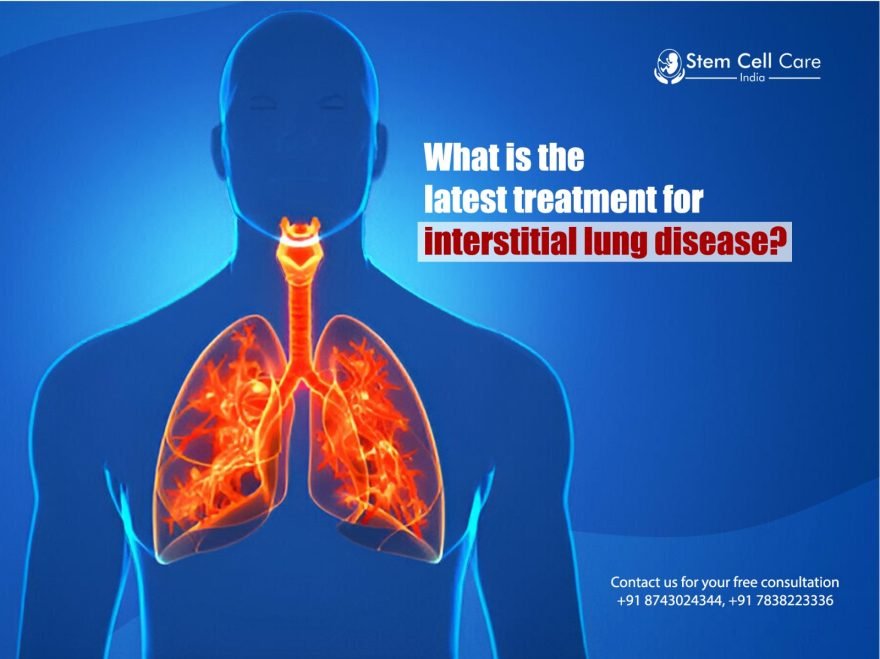Table of Contents
As medical research explores the field of stem cells more, stem cell therapy emerges as the best treatment for interstitial lung disease. It represents a group of lung disorders classified as progressive scarring of the lung tissue, which leads to a decline in lung function and breathing complications. Despite advances in treatment, this condition remains challenging to manage. Recent studies and research have brought stem cell therapy as a potential alternative, offering the light of hope for improved results.
Symptoms of ILD
Interstitial lung disease symptoms vary depending on the specific type and harshness of the condition:
- Shortness of Breath: It generally worsens with exertion and may eventually occur even at rest.
- Chronic Dry Cough: This is a persistent, inadequate cough that doesn’t reciprocate to common treatments.
- Fatigue: This is a typical feeling of tiredness and weakness that some individuals may feel that interferes with daily activities.
- Unintentional Weight Loss: Individuals may lose weight without doing anything intentionally, often because of the decreased appetite and increased energy expenditure from breathing effort.
- Ches Discomfort: Some may feel pain and tightness in the chest, which, although less common, can be a symptom.
- Clubbing: It is an enlargement of the fingertips or toes, commonly associated with severe lung diseases.
- Crackles: A crackling sound heard through a stethoscope when breathing in, indicative of fluids in the air sacs.
Stem Cell Therapy for Interstitial Lung Disease
The cutting-edge therapy known as stem cell therapy is becoming available as a treatment for many chronic illnesses, including interstitial lung disease (ILD). The objectives of this therapy are to improve lung functions, lessen inflammation, and replace or repair damaged lung tissues.
A stem cell to use in treating interstitial lung disease is in the following:
- Mesenchymal Stem Cells (MSCs)
Mesenchymal stem cells are the main stem cells that are used to treat interstitial lung disease. These adult cells are found in bone marrow, adipose tissue, and umbilical cord blood, They have the ability to differentiate into various cell types and possess anti-inflammatory properties.
How does Stem Cell Therapy Work?
- Regeneration & Repair
Stem cells have the ability to differentiate into lung epithelial cells, potentially regenerating damaged lung tissue and improving lung function.
- Anti-inflammatory Effects
These mesenchymal stem cells release anti-inflammatory cytokines, leading to minimizing inflammation and fibrosis in the lungs, and slowing disease progression.
- Immunomodulation
Stem cells can modulate the immune system, minimizing the immune response that contributes to lung tissue damage in ILD.
Current Research & Clinical Trials
Many clinical trials and studies have been exploring the safety and efficacy of stem cell therapy for ILD. Initial phase studies have shown promising results, with some patients experiencing improved lung function, minimized symptoms, and elevated quality of life.
Administration of Stem Cells Therapy
- Intravenous Infusion: Some stem cells are typically administered through an intravenous infusion, allowing them to travel to the lungs through the bloodstream.
- Direct Injection: It can also be transferred into the patient’s body by injecting the stem cell directly into the effective area. However, this method is less common.
Potential Benefits
- Stem cell therapy has the potential to mitigate lung inflammation and fibrosis, thereby impeding the advancement of ILD and maintaining lung function.
- Better Symptoms: People may encounter and experience relief from weariness and dyspnea, which improves their general quality of life.
- Reduced Need for Other Treatment: Successful interstitial lung disease treatment by stem cell therapy could reduce the need for other medications and treatments, minimizing side effects and complications.
Final Verdict
Treatment with stem cells presents a promising alternative for many diseases, including interstitial lung disease, offering better outcomes and better care. While investigations are still in progress, preliminary findings indicate that stem cell therapy may soon prove to be an effective treatment for ILD. Individuals who are considering stem cell therapy can speak with Stem Cell Care India to learn more about the possible advantages and disadvantages of the procedure and to decide if it is right for them.


